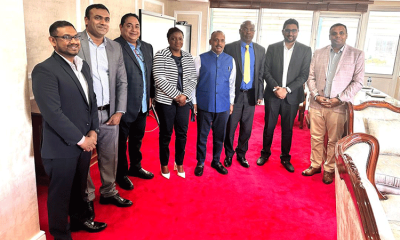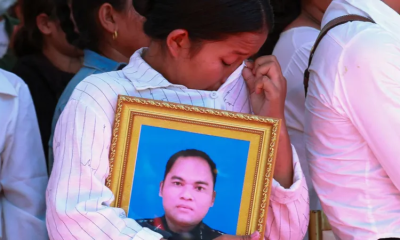Latest News
At least 155 killed in Tanzania as heavy rains pound East Africa
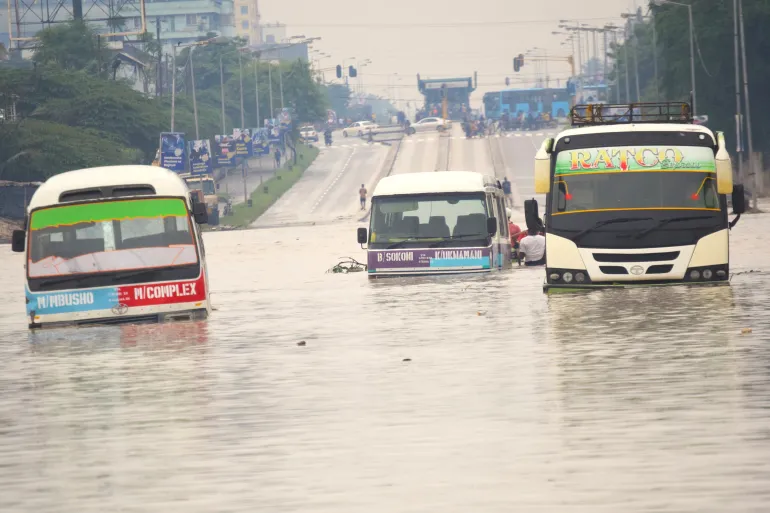
Flooding and landslides in Tanzania caused by weeks of heavy rain have killed 155 people and injured 236 others, the country’s prime minister has said, as intense downpours continue across East Africa.
Prime Minister Kassim Majaliwa told Parliament that the El Nino climate pattern has worsened the ongoing rainy season, causing the flooding and destroying roads, bridges and railways. “The heavy El Nino rains, accompanied by strong winds, floods and landslides in various parts of the country, have caused significant damage,” Majaliwa told Parliament on Thursday.
El Nino is a naturally occurring climate pattern typically associated with increased heat worldwide, as well as drought and heavy rains.
The devastating effects of the rains were “primarily due to environmental degradation”, Majaliwa added, blaming deforestation, unsustainable farming practices such as “slash and burn” agriculture and unregulated livestock grazing.
More than 200,000 people and 51,000 households were affected by the rains, the prime minister noted. Flooded schools were closed and emergency services were rescuing people marooned by the floodwaters.
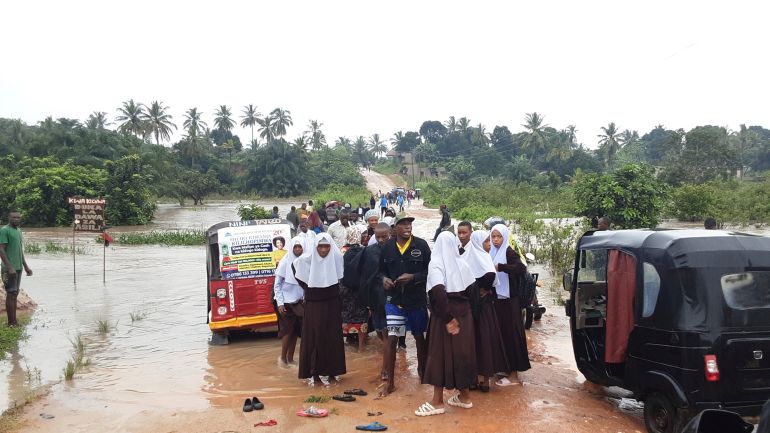 Schoolchildren are stranded due to a damaged River Zingiziwa bridge in Dar es Salaam, Tanzania (Aljazeera)
Schoolchildren are stranded due to a damaged River Zingiziwa bridge in Dar es Salaam, Tanzania (Aljazeera)
Majaliwa warned those living in low-lying areas to move to higher ground and urged district officials to ensure that provisions meant for those whose homes were washed away go to those in need of the supplies.
On April 14, the government said a total of 58 people, including children, had been killed in rains and floods since the beginning of the month.
The East African region has been pounded by heavier-than-usual rainfall during the current rainy season, with flooding also reported in neighbouring Burundi and Kenya.
In Kenya, 35 people were reported dead as of Monday, and the number was expected to increase as flooding continues across the country
Some parts of the capital, Nairobi, remained underwater on Thursday, and Kenyans were warned to stay alert, with the forecast for more heavy rains across the country in coming days.
In the Mathare neighbourhood in the capital, at least four bodies were retrieved from flooded houses on Wednesday. Local media reported that more bodies were retrieved from the Mathare River.

Kenyan President William Ruto chaired a multi-agency flood response meeting on Thursday and directed the National Youth Service to provide land for people in flood-affected areas.
Deputy President Rigathi Gachagua told a press briefing that people affected by the floods would be given food and other goods, while those living in the most vulnerable areas would be relocated.
In Burundi, around 96,000 people were displaced by months of relentless rains, the United Nations and the government said earlier this month.
The UN Office for the Coordination of Humanitarian Affairs (OCHA) said in an update this week that in Somalia, the “Gu” rains (from April to June) were intensifying, with flash floods reported since April 19.
Uganda has also suffered heavy storms that have caused riverbanks to burst, with two fatalities confirmed and several hundred villagers displaced.
(Aljazeera)
Latest News
Justin Greaves 202*, Kemar Roach 58* anchor West Indies to epic draw

An epic stonewall from Justin Greaves had him face more than half the deliveries of his 12-Test career in this one innings alone, as West Indies pocketed their first points in their sixth Test of the 2025-27 World Test Championship cycle in Christchurch. The 163.3 overs they eventually faced is the longest fourth-innings in Tests for West Indies in 95 years.
Having played the supporting role to Shai Hope through their 196-run stand that rescued West Indies from 92 for 4 on Day 3, Greaves became the heartbeat of the innings once Hope (140) and Tevin Imlach fell in quick succession.
He brought up a stunning maiden Test double ton in the penultimate over when he sliced Jacob Duffy over backward point to pocket what was to be only his second boundary in all of the final session as his colleagues stood up to give him a standing ovation.
He finished 202 not out, having faced 388 deliveries, turning an innings that began with the typical artistic flair and flamboyance into a steely knock full of purpose and grit. Greaves wore more blows on the body than he could count, batted more deliveries than he had in his career, and reined in his natural instincts with single-minded purpose and determination.
His effort led to an astonishing turnaround from the first hour of the day, when West Indies stumbled to 277 for 6 in a mammoth chase of 531. A depleted New Zealand attack down to two weary frontline pacers in Zak Foulkes and Jacob Duffy, fancied their chances. But Greaves found an able ally in Kemar Roach, the 37-year-old veteran, who batted like his life depended on it in his comeback Test.
Roach made 58 not out – his highest first-class score – while facing 233 deliveries himself. Astonishingly, he made just 5 off the last 104 deliveries he faced during a dramatic final two hours of play even as the sun baked down hard on an increasingly docile Hagley Oval surface. Yet that should not take away from the epic rearguard from Hope, Greaves, and Roach.
The frustration of not being able to separate Greaves and Roach during the second and third sessions was evident, as New Zealand’s bowlers were ground into the dust. They would also have felt robbed when Roach appeared to have nicked Michael Bracewell to Tom Latham behind the stumps – though perhaps only having themselves to blame for burning all their reviews.

Even so, it was the thinnest of spikes that made it all the more challenging for Alex Wharf, the on-field umpire, who only a few minutes earlier made a cracking decision by turning down what everyone believed was an obvious inside-edge onto the pad to the slips, again off Bracewell. Replays showed Wharf had made a terrific call.
As admirably as Roach played, he also maximised his opportunities. On 30, he was put down by Foulkes at backward square leg when he attempted an expansive sweep off Bracewell. On 35, Blair Tickner, subbing for Matt Henry, missed a direct hit at the bowler’s end from a few yards away at short mid-on as Roach was misjudging a run.
Then on 47 came the most obvious chance, when Roach attempted to loft Bracewell had him nearly hole out to mid-on. Except, Glenn Phillips, the other sub, saw Tickner looking to intercept the ball from mid-off and palm it away.
With those three chances firmly behind him, Roach buckled down and offered a dead bat to anything that came his way against Bracewell. Foulkes and Duffy tried to ruffle him with the short ball from around the wicket, only for him to duck and weave.
Going into the final session, it became increasingly evident West Indies weren’t going to be enticed by the prospect of chasing down the 132 runs they needed in 31 possible overs. This clarity allowed them to approach the session with dead defence being the sole primary aim, even as Greaves began to tire and suffer cramps that needed medical attention at different times.
Not even the possibility of an impending double century enticed Greaves into attempting anything loose, even if Tom Latham gave him the open invitation to drive Bracewell against the turn through the covers. This wasn’t perhaps a risk not worth taking given how easily West Indies’ lower order collapsed in the first innings.
But long before a draw became the only possibility, even as New Zealand tried to attack with six fielders around the bat in the final session, Hope and Greaves pocketed runs at every available opportunity as the hosts rushed through their first six overs with part-time spin in a bid to take the second new ball quickly.
But even after they took it, there was hardly any assistance for the bowlers. Hope defended comfortably off a length with neither Foulkes nor Duffy consistently able to challenge the outside edge consistently. The occasional misfields, like – Rachin Ravindra letting one through his legs for four, or Will Young overrunning a throw while backing up – added to the sense of raggedness New Zealand had begun to feel.
A breakthrough lifted them shortly after drinks when Duffy dug in a short ball down leg, which Hope gloved behind, only for Latham to throw himself to his left and pluck a stunner from his webbing to end a marathon. Then came a second when Imlach was trapped by a nip-backer.
They may have thought then it was just a matter of time. It could’ve been had they not reprieved Roach, but those reprieves proved even more costly given they only had two fast bowlers and two part-timers available – all of them going full throttle to the limit – despite not getting much out of the surface.
In the end, the manner in which West Indies earned the draw may prove far more valuable. Above all, it was a day that reminded everyone of the slow-burn magic only Test cricket could deliver.
Brief scores:
West Indies 167 (Shai Hope 56, Tagenarine Chanderpaul 5; Matt Henry 3-43, Zak Foulkes 2-32, Jacob Duffy 5-34) and 457 for 6 (Justin Greaves 202*, Shai Hope 140, Kemar Roach 58*; Jacob Duffy 3-122) drew with New Zealand 231 (Kane Williamson 52, Michaell Bracewell 47, Jayden Seales 2-44, Kemar Roach 2-47, Ojay Shields 2-34, Justin Graves 2-35) and 466 for 8 dec (Ravindra 176, Tom Latham 145; Kemar Roach 5-78, Ojay Shields 2-74)
[Cricinfo]
Latest News
Landslide RED warnings continue to be in force for the Districts of Kandy, Kegalle, Kurunegala, Matale and Nuwara Eliya
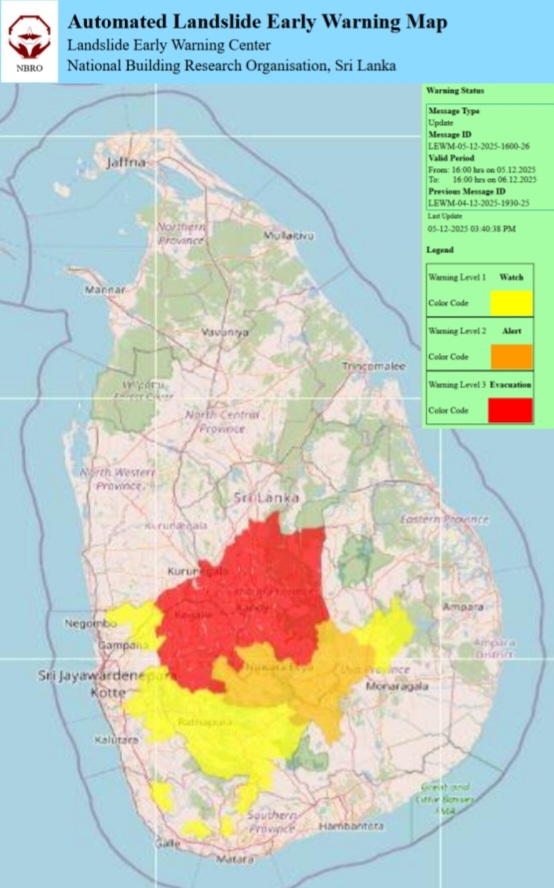
The RED Landslide Early Warnings issued by the Landslide Early Warning Center of the National Building Research Organization [NBRO] to the Districts of Kandy, Kegalle, Kurunegala, Matale and Nuwara Eliya have been extended until 1600hrs today [06th December 2025]. Landslide Early warnings have also been issued to the districts of Badulla, Colombo, Galle, Gampaha, Kalutara, Matara, Monaragala and Ratnapura,
Accordingly,
LEVEL III RED warnings have been issued to the Divisional Secretaries Divisions and surrounding areas of Gangawata Korale, Deltota, Doluwa, Thumpane, Medadumbara, Minipe, Pathahewaheta, Yatinuwara, Ganga Ihala Korale, Akurana, Udunuwara, Panvila, Pathadumbara, Kundasale, Pasbage Korale, Hatharaliyadda, Ududumbara, Poojapitiya, Harispattuwa and Udapalatha in the Kandy district, Galigamuwa, Kegalle, Mawanella, Rambukkana, Dehiowita, Warakapola, Deraniyagala, Bulathkohupitiya, Ruwanwella, Yatiyanthota and Aranayaka in the Kegalle district, Narammala, Mawathagama, Mallawapitiya, Alawwa, Rideegama and Polgahawela in the Kurunegala district, Rattota, Wilgamuwa, Ukuwela, Pallepola, Matale, Laggala Pallegama, Yatawatta, Naula and Ambanganga Korale in the Matale district, and Nildandahinna, Walapane, Hanguranketha and Mathurata in the Nuwara Eliya district.
LEVEL II AMBER warnings have been issued to the Divisional Secretaries Divisions and surrounding areas of Uva Paranagama, Kandeketiya, Bandarawela, Soranathota, Hali_Ela, Meegahakivula, Badulla, Ella, Haputhale, Lunugala, Welimada, Passara and Haldummulla in the Badulla district, Nuwara Eliya, Ambagamuwa Korale, Thalawakele, Norwood, Kothmale West and Kothmale East in the Nuwara Eliya district, and Kahawaththa, Godakawela and Kolonna in the Ratnapura district.
LEVEL I YELLOW warnings have been issued to the Divisional Secretaries Divisions and surrounding areas of Padukka and Seethawaka in the Colombo district, Elpitiya and Yakkalamulla in the Galle district, Mirigama, Attanagalla and Divulapitiya in the Gampaha district, Bulathsinhala, Ingiriya and Horana in the Kalutara district, Athuraliya and Pasgoda in the Matara district, Bibile and Medagama in the Monaragala district, and Kiriella, Nivithigala, Eheliyagoda, Kuruwita, Kalawana, Pelmadulla, Elapatha, Balangoda, Openayake, Imbulpe, Ayagama, Ratnapura and Kaltota in the Ratnapura district.
Latest News
Fakhar Zaman fined 10% of match fee for showing dissent at umpire’s decision

Pakistan’s Fakhar Zaman has been fined 10% of his match fee and docked one demerit point after he was found guilty of breaching level 1 of the ICC code of conduct during the tri series final against Sri Lanka on November 29.
Fakhar was found to have breached article 2.8 of the code of conduct, which relates to “showing dissent at an umpire’s decision during an international match.” He admitted to the offence and accepted the sanction proposed by the match referee, so there was no need for a formal hearing, said an ICC release.
The incident occurred in the 19th over of the final when Fakhar back-peddled from short-third, dived and seemed to have taken a stunning catch off Dasun Shanaka’s leading edge. The third umpire was called to check for the catch, and he deemed that the ball brushed the ground when Fakhar dived, and ruled it not out. Both Fakhar and the bowler, Shaheen Shah Afridi weren’t happy with the decision and made it known to the on-field umpires.
The very next ball, Shanaka swiped across the line and was clean bowled. Fakhar looked at the umpire and sarcastically appealed for the decision. Pakistan eventually won the final by six wickets as batting first, Sri Lanka collapsed in a heap, losing 9 for 30 to be bowled out for 114. Babar Azam shepherded the chase with an unbeaten 37, taking Pakistan over the line in 18.4 overs.
This was Fakhar’s first offence in a 24-month period. Level 1 breaches carry a minimum penalty of an official reprimand, a maximum penalty of 50% of a player’s match fee, and one or two demerit points.
[Cricinfo]
-

 News6 days ago
News6 days agoWeather disasters: Sri Lanka flooded by policy blunders, weak enforcement and environmental crime – Climate Expert
-
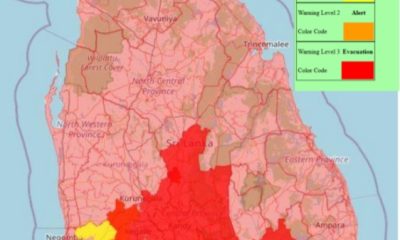
 Latest News7 days ago
Latest News7 days agoLevel I landslide RED warnings issued to the districts of Badulla, Colombo, Gampaha, Kalutara, Kandy, Kegalle, Kurnegala, Natale, Monaragala, Nuwara Eliya and Ratnapura
-
News3 days ago
Lunuwila tragedy not caused by those videoing Bell 212: SLAF
-
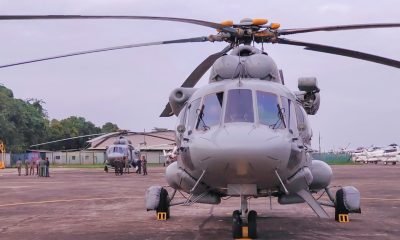
 Latest News7 days ago
Latest News7 days agoINS VIKRANT deploys helicopters for disaster relief operations
-

 Latest News5 days ago
Latest News5 days agoLevel III landslide early warnings issued to the districts of Badulla, Kandy, Kegalle, Kurunegala, Matale and Nuwara-Eliya
-

 News2 days ago
News2 days agoLevel III landslide early warning continue to be in force in the districts of Kandy, Kegalle, Kurunegala and Matale
-

 Features4 days ago
Features4 days agoDitwah: An unusual cyclone
-

 Latest News5 days ago
Latest News5 days agoUpdated Payment Instructions for Disaster Relief Contributions










